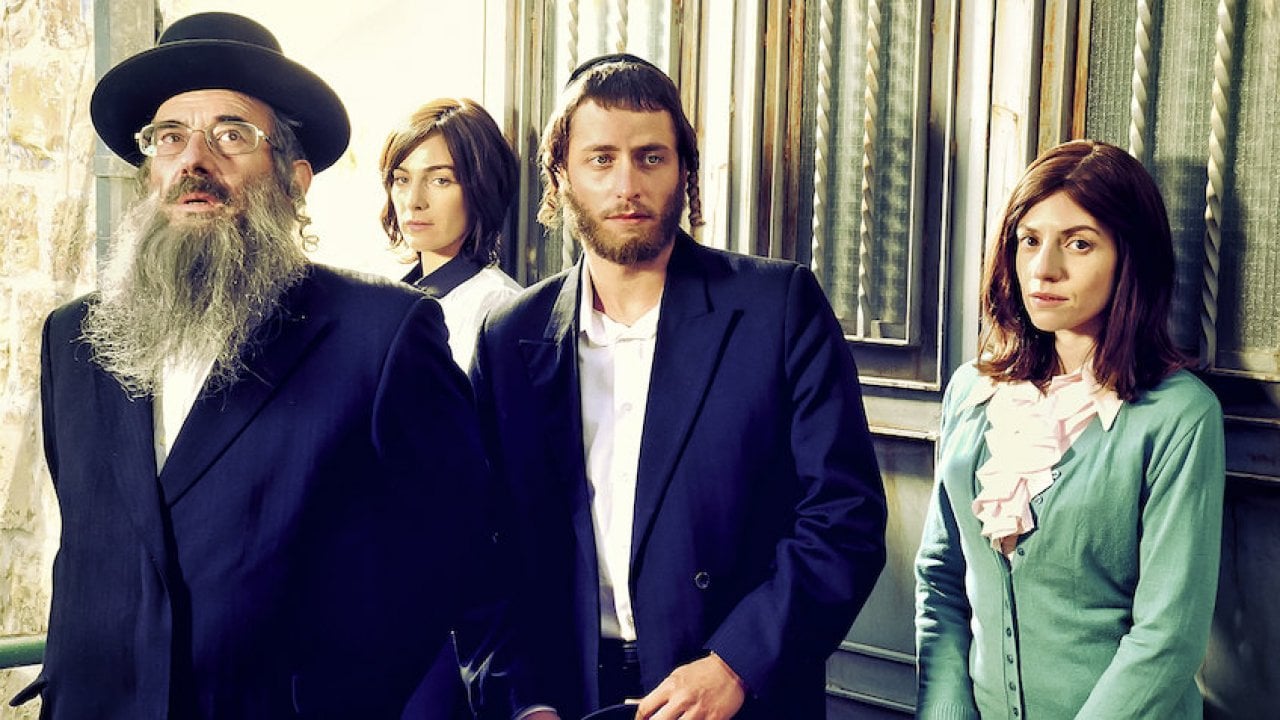To borrow the tagline from Poltergiest II: They’re ba-a-ack! Yes, the third season of the acclaimed Israeli television series Shtisel is finally available to Canadian viewers, streaming on Netflix at the end of the month. Thanks to a preview of the first three episodes offered by the Toronto Jewish Film Festival, Canadian audiences have re-engaged with the series, its complex haredi characters and story arcs.
Season three offers more than simply a nostalgic reconnection to lives we’ve peered into before. A four-year gap between the end of season two and the first episode of season three plunges us into a world in which life has moved ahead for each of the characters—and the characters themselves have changed. Without giving away any of the surprises that these first episodes hold, I’ll note that the Poltergeist reference is not gratuitous. As the characters move ahead, past actions, decisions, and relationships come back to haunt them, and they must contend with traces of the past and their consequences.
I confess to have binge-watched the entire season in two sittings through an Israeli portal, with a bit of help from Hebrew subtitles for some of the Yiddish. That’s how good season three is. The dialogue is sharp and crisp, our sense of the characters deepens, and the plot is fresh, original, and engaging. In addition to the extended family of the widowed family patriarch Shulem Shtisel, the season brings in new characters, and reaches beyond their neighbourhood.
Fans of the series will recall that in the first season, Shulem’s mother got hooked on a television soap opera. Living in senior housing, she has a television in her room—an object forbidden in her community. Watching TV relieves her sense of boredom and isolation. But more than that, it pulls her into an imagined world that feels real, engaging, and meaningful. Viewing lives so different from her own, she does not judge or condemn these invented characters, but finds that she cares deeply about them, that she feels connected, that they are not so different, after all. We non-haredi viewers of Shtisel have a similar experience.
If the first two seasons relied on a non-haredi fascination into a world whose intricacies and intimacies are largely hidden from us, the third season creates bridges between that world and our own. The voyeuristic element that the series, in part, relied upon to attract and hold a more secular audience gives way, in the current season, to a sense of self-recognition, even amid differences in dress, roles, and practices.
The isolation between the haredi world and the world “outside” proves increasingly porous. Several times characters reflect explicitly on similarities between situations they grapple with, and situations “they” (that is, we who do not live in the haredi world) contend with. Feminism influences the decisions that women make and the actions they take. Socio-economic differences emerge. Children test the hold that parental ways have on them. People struggle with issues of parenthood, love, loss, divorce, longing—inflected, perhaps, by the cultural habits and restrictions of their community, but very much part of the human condition in its most universal sense.
The religious world itself emerges, in season three, in greater diversity. Over the course of the season’s episodes, viewers come to meet characters who have encountered the world of the haredi houses of study, but not remained there. Instead, they interact to varying degrees with a shared Israeli cultural space—music, art, literature, science, university studies—while still leading religiously observant lives. The Ashkenazi-Sephardi divide surfaces, as well. Competition among houses of study and their leaders takes shape, sometimes with comic effect.
In addition to the fine cast that pulls intricate and intense emotions out of the characters they play, Shtisel draws on a diverse and talented group of directors and writers. Apparent in the series is the influence of the wonderful Ma’aleh School of Film and Television in Jerusalem—where the training of actors, directors, scriptwriters, editors and others involved in media is designed so that it does not conflict with religious observance. A number of the plot elements that emerge in season three have their roots in some of the fine, award-winning short films that Ma’aleh students have produced—the comic complications of shidduch dates, for example, or the tensions between parents and children.
The different components involved in the development and production of Shtisel are also a plane on which people of different backgrounds encounter one another. Religious and secular Israeli Jews, Palestinian Israelis such as Sayed Kashua, work creatively together. One episode has a meta-moment where a haredi man critiques the secular actors who play haredim on a production set. Shtisel is a part of a larger move in Israeli media where different groups, cultures and subcultures have a hand in portraying their own communities and concerns, rather than being depicted solely by outsiders. What has resulted is a rich, complex, and challenging media culture.
Sara R. Horowitz is a professor of Comparative Literature and Humanities and former director of the Israel and Golda Koschitzky Centre for Jewish Studies at York University







